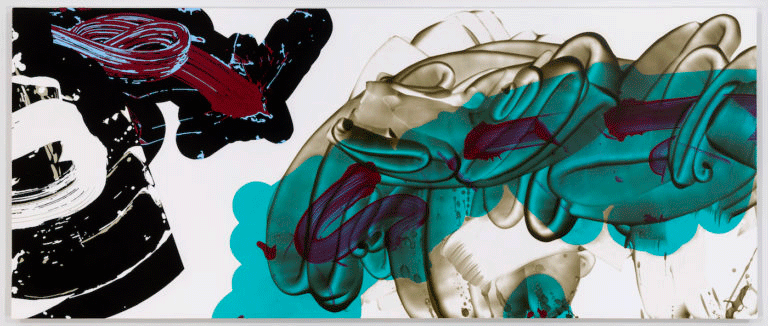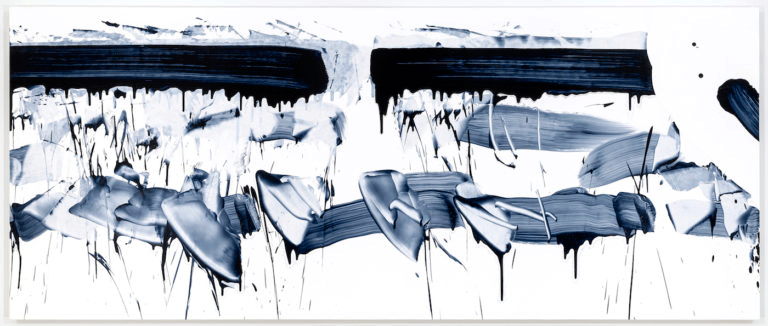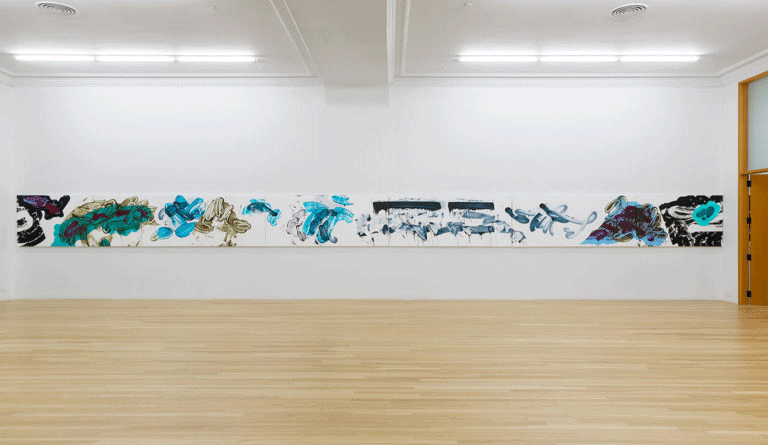 California born artist, David Reed, expresses his fascination with “episodic seeing” through conceptual abstract paintings. Reed is known for creating room-length abstract paintings of swirling brushstrokes. His latest exhibition, David Reed: New Paintings, is oil and acrylic on Dibond aluminum composite material. The paintings could easily be broken into several individual pieces of work that stand on their own, but together they create a continuous entity of multiple Dibond panels.
California born artist, David Reed, expresses his fascination with “episodic seeing” through conceptual abstract paintings. Reed is known for creating room-length abstract paintings of swirling brushstrokes. His latest exhibition, David Reed: New Paintings, is oil and acrylic on Dibond aluminum composite material. The paintings could easily be broken into several individual pieces of work that stand on their own, but together they create a continuous entity of multiple Dibond panels.
Reed, who was born in 1946, rose to fame with his “Brushstroke” in the mid 1970s. His early work was done on narrow panels measuring 76 by 11 inches, where he would limit his palette to black and white. His family is comprised of artists and painters who greatly influenced the artist growing up. One painter in particular that Reed’s uncle discovered, John Mclaughlin, had a big influence on the young artist. McLaughlin was a pioneer of minimalism and geometric abstraction; two elements prominently displayed in Reed’s work. Other influences include Baroque, a style of painting characterized by detailed exaggerated motion, and two French artists Degas and Delacroix.
 Unlike his contemporaries, Reed did not embrace the styles of the 1950s and 1960s. Instead, he incorporated installation art and film into his work as a way of going forward rather than embracing the past. The different use of mediums underscored his painting’s ability to be a part of its time.
Unlike his contemporaries, Reed did not embrace the styles of the 1950s and 1960s. Instead, he incorporated installation art and film into his work as a way of going forward rather than embracing the past. The different use of mediums underscored his painting’s ability to be a part of its time.
His approach to painting went beyond the canvas to emphasize the sweep of his arm or movement of his hand. It’s a method known for energetic, expressive brushstrokes called “gestural painting.” There were several well-known artists who used the technique ironically. The two he was closest to were Roy Lichtenstein and Robert Rauschenberg. The difference between the artists was that Reed was being sincere and authentic in his gestural brushstroke. Part of the allure of Reed’s technique is the emphasis on the “process of creating” in addition to the work itself.
 In Reed’s most recent exhibition, his brushstrokes exude emotion and personality and drift across a smooth white surface. He begins with pencil and finishes with smooth single strokes of acrylic paint. The brushstrokes create distinct fragments and then bleed into the adjacent panel connecting the piece into one disjointed work. His palette, an expansion from his earlier work, included grays, scarlet, lilac, and pale blues.
In Reed’s most recent exhibition, his brushstrokes exude emotion and personality and drift across a smooth white surface. He begins with pencil and finishes with smooth single strokes of acrylic paint. The brushstrokes create distinct fragments and then bleed into the adjacent panel connecting the piece into one disjointed work. His palette, an expansion from his earlier work, included grays, scarlet, lilac, and pale blues.
Ever since Reed emerged in the 1970s, Reed has been living and working in New York City. His latest exhibit in New York at Peter Blum Gallery is the latest proof that the artist doesn’t look back on nostalgia.
information and photography courtesy of Hyperallergic

